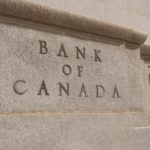T-minus 76 days and counting until Canada’s banking regulator launches its controversial mortgage stress test. It’ll be squarely aimed at people with heavier debt loads and at least 20 per cent equity – and it will be a tide turner.
Given where Canada’s home prices and debt levels are at, this is easily the most potent mortgage rule change of all time. Here are 10 ways it’s going to shake up Canada’s mortgage market for years to come:
1. It’s like a two-point rate hike: Uninsured borrowers can qualify for a mortgage today at five-year fixed rates as low as 2.97 per cent. In a few months that hurdle will soar to almost 5 per cent. If you’re affected by this, you could need upward of 20 per cent more income to get the same old bank mortgage that you could get today.
2. Quantifying the impact: An OSFI spokesperson refused to say how many borrowers might be affected, calling that data “supervisory information” that is “confidential.” But at least one in six uninsured borrowers could feel the blow based on the Bank of Canada estimates of “riskier borrowers” and predictions from industry economists like Will Dunning. Scores of borrowers will be forced to defer buying, pay higher rates, find a co-borrower and/or put more money down to qualify for a mortgage.
3. Why OSFI did it: Forcing people to prove they can afford much higher rates will substantially increase the quality of borrowers at Canada’s banks. OSFI argues that this will insulate our banking system from economic shocks, and to the extent it’s correct – that’s good news.
4. A leap in non-prime borrowing costs: Many home buyers with above-average debt, relative to income, will resort to much higher-cost lenders who allow more flexible debt ratio limits. At the very least, more will choose longer amortizations (i.e., 30 years instead of 25 years) and take longer to pay down their mortgage. Non-prime lenders will also become pickier. Why? Because they’ll see a flood of formerly “bankable” borrowers getting declined by the Big Six. That could force hundreds of thousands of borrowers into the arms of lenders with the highest rates. If you have a higher debt load, weak credit and/or less provable income, get ready to pay the piper.
5. A safer market or riskier market? The shift to expensive non-prime lenders could boost mortgage carrying costs and overburden many higher-risk borrowers, exacerbating debt and default risk in the non-prime space. “We’re very aware of the potential migration risk [from banks to less regulated lenders],” Banking superintendent Jeremy Rudin told BNN on Tuesday. “It’s not something that would be a positive development.” If rates keep rising, non-prime default rates could spike over time. Albeit, keep in mind, we’re talking a single-digit percentage of borrowers here. The question people will ask is: Does growing debt risk in the non-prime mortgage market, combined with home price risk and a potential drop in employment and consumer spending truly lower banks’ risk?
6. Provincially regulated lenders win: Unless provincial regulators follow OSFI’s lead (if history is a guide, they won’t), it’ll be a bonanza for some credit unions. Many credit unions will still let you get a mortgage based on your actual (contract) rate, instead of the much higher stress-test rate. That means you’ll qualify for a bigger loan – if you want one. We could also see a few non-prime lenders charge lower rates to help people qualify for bigger mortgages, while tacking on a fee to mortgage for that privilege.
7. Trapped renewers: Lenders are thrilled about one thing: customer retention. As many as one in six people renewing their mortgage could be trapped at their existing bank because they can’t pass the stress test at another lender. And if a bank knows you can’t leave, you can bet your boots they’ll use that as leverage to serve up subpar renewal rates.
8. A short-term spurt: Expect a rush of buying in the near term from people who fear they won’t qualify after Jan. 1. The question is, how much of that short-term demand will be offset by people selling, as a result of the rule change’s perceived negative impact. In the medium term – other things equal – this is bearish for Canadian home prices. Period. That said, borrowers will likely adapt within two to five years. And prices will ultimately resume higher.
9. The stress test could change…someday: While few credible sources expect OSFI’s announcement to trigger a housing crash, the higher rates go, the more this will slow housing. Financial markets expect another rate hike by January, with potentially two to four – or more – to come. Mr. Rudin says OSFI may “revisit” the restrictiveness of the stress test if rates surge, but will the regulator act in time to prevent diving home values? That’s the trillion-dollar question. The good news is that rates generally rise with a strengthening economy, which is bullish for housing – for at least a little while.
10. Questions abound: Tuesday’s news will undoubtedly spark contentious debate over whether this was all necessary, given already slowing home prices, provincial rule tightening, rising rates and the fact that uninsured default rates are considerably lower than for people with less than 20 per cent equity.
OSFI says its responsibility is to keep banks safe and sound. Overly concerning itself with the side effects of its mortgage stress test is not its mandate, it claims. Well, in a few years we might be either congratulating OSFI, or asking if that mandate needs to change.
Disclaimer: Original source from theglobeandmail.com




